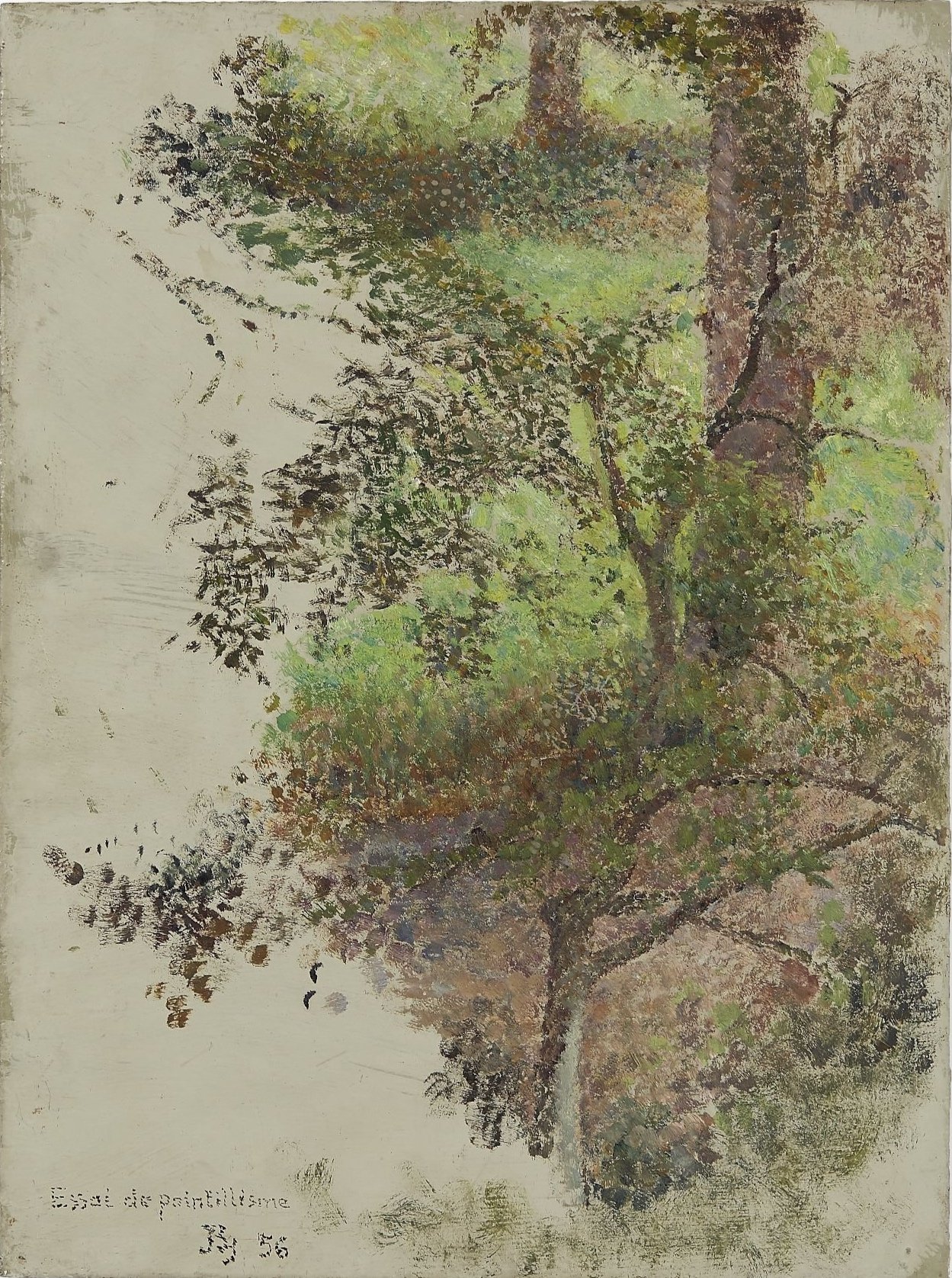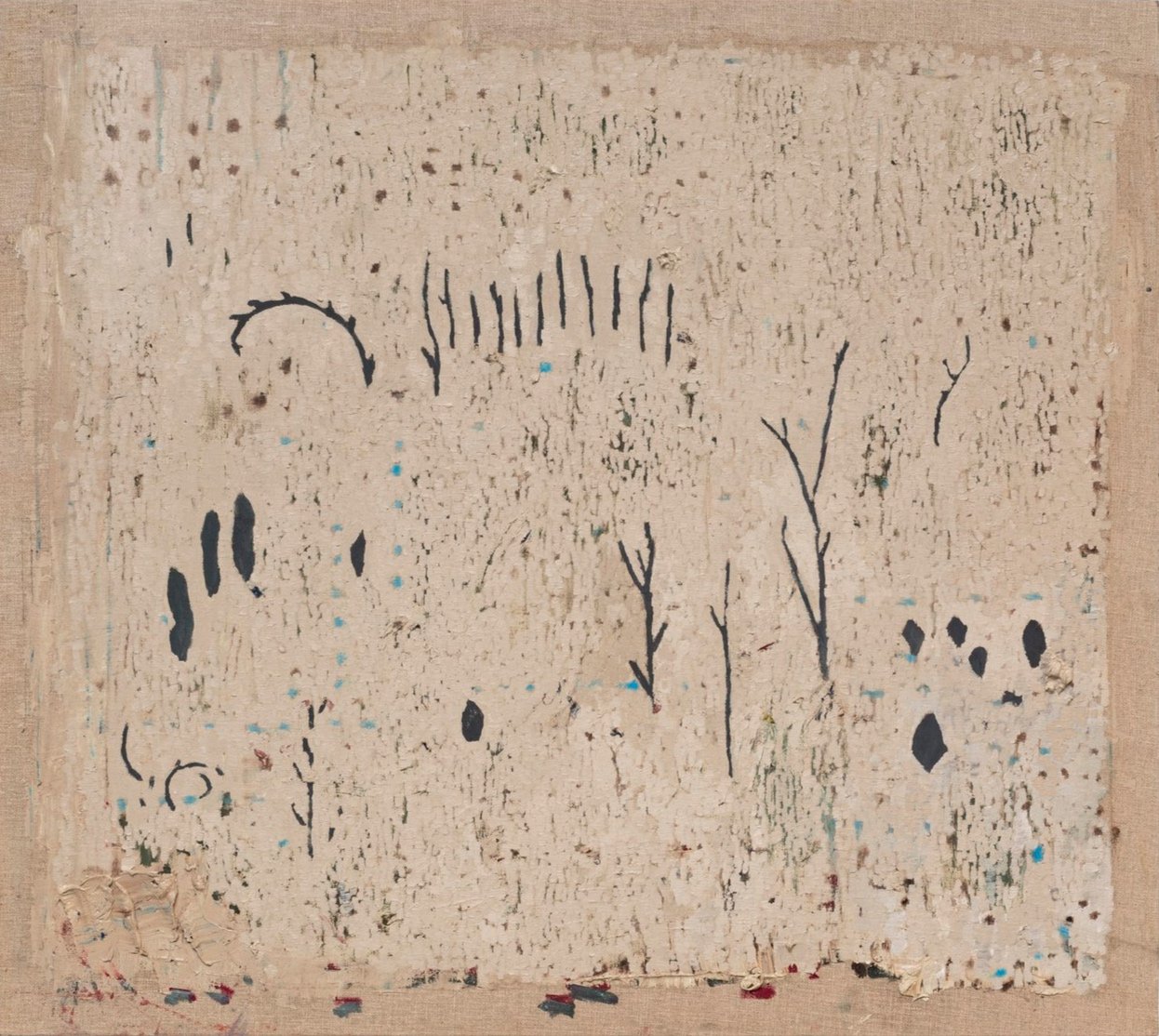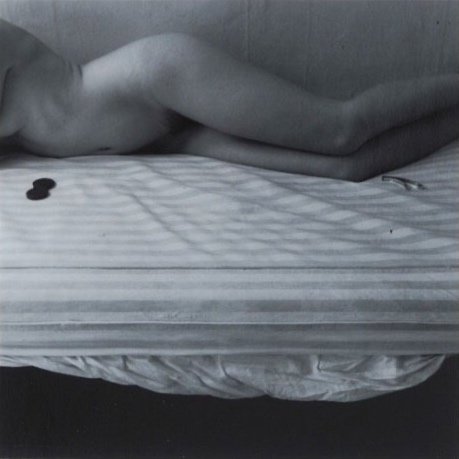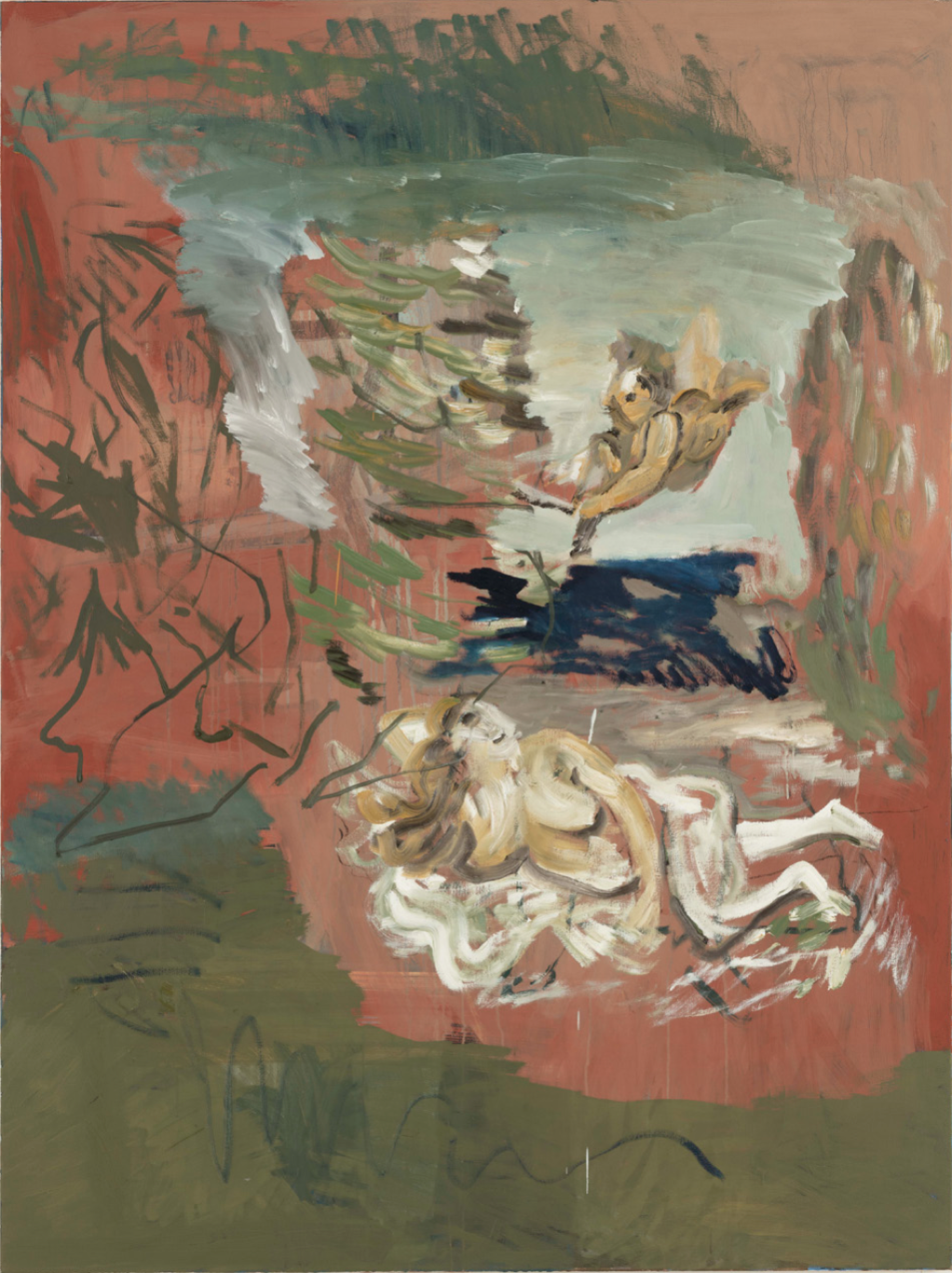Marina Rheingantz, Espinho, 2019. Oil on linen, 80 x 90 cm.
Breather II
Balthus, Raphael Egil, Hardy Hill, Amadeo Luciano Lorenzato, Marina Rheingantz and Francesca Woodman
CLICK HERE to request a digital copy of the exhibition catalogue
I do not know how to describe this. It is not really an exhibition, in fact it has been conceived as a kind of anti-exhibition, an attempt to sidestep all the intentions of a properly considered art show. Maybe it could be called a salon, but that conjures images of French people proselytising in drawing rooms with paintings hung from ceiling to floor. A nice idea, but that’s not what this is.
The reason it is called Breather II is that it is the second time I am presenting a group of works in this way at CASSIUS&Co., the first having been called Studies and Exercises, held in 2022. That, like this, was a presentation of works that didn’t have much to do with each other, but were also not so very diverse that their differences were a conceit. Both Studies and Exercises and this thing here have come about as the result of what I am calling exhibition fatigue - i.e., a necessary holiday, a breather, from the relentless cycle of showmanship and outdoing-of-oneself that is generally expected of art galleries and their exhibition programs. And why shouldn’t this be allowed? The gallery is not a fashion house that has to reinvent itself each season, as though the last was so unbearable and the new one so groundbreaking. I would like my gallery to be aiming for the eternal more than the fleeting, and to move at the pace of quality, which is necessarily slow.
The use of the term ‘breather’ refers to Duchamp, who once when asked what he had been up to since his supposed retirement from art-making said, ‘Oh I am a breather, a respirateur, isn’t that enough?’. It is an expression I find heartening, to think that merely being alive, persisting, is quite enough ‘doing’ for anyone. While the works in Studies and Exercises were at least all works on paper, even that unifying feature has been dispensed of here. Now the only justification for bringing together this group of objects is that I have them and I love them. It is the curatorial equivalent of just breathing.
An interesting phenomenon emerges out of taking this position. The human capacity for finding patterns in images when in fact there aren’t any, as in the constellations of the night sky, begins immediately to set in, and what began as an unjustifiable group of works begins to appear connected, first visually, physically, and then in terms of idea. One example I don’t mind pointing out is the relation between Balthus’ Essai de pointillisme and Raphael Egil’s Vorplatz (Piemont), which in subject, palette and composition are virtually the same painting but in mark-making and idea quite the opposite. Likewise the correspondence of the two Balthus drawings and the photographs of Francesca Woodman, a pairing which could easily be the subject of a whole exhibition: both artists are living in Rome in the mid 1970s and making works out of the female body, but doing so from opposite ends of today’s sense of acceptability.
I don’t want to write any more, because the interesting part of this phenomenon is that the viewer has the authority to make these connections for themselves, without direction from the organiser of the exhibition. The task of make meaning out of this thing is thus as much in your hands as mine.

Balthus, Essai de Pointillisme, 1956. Oil on panel, 49 x 36 cm.

Marina Rheingantz, Espinho, 2019. Oil on linen, 80 x 90 cm.

Francesca Woodman, Untitled (Providence), 1977. Silver gelatine print, PP aside from edition of 40, image size 10 x 11 cm.

Raphael Egil, 'Venus (Cézanne), 2019. Oil and tempera on canvas, 160 x 120 cm








